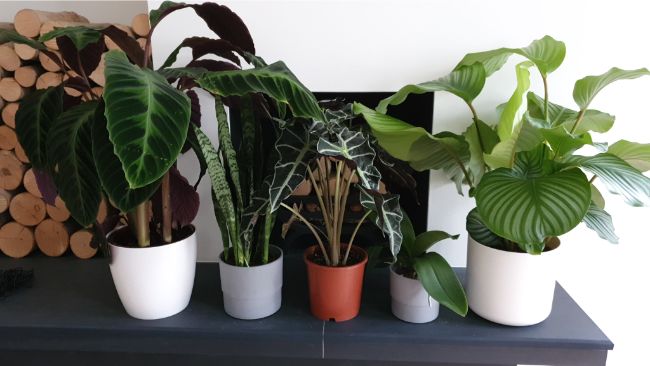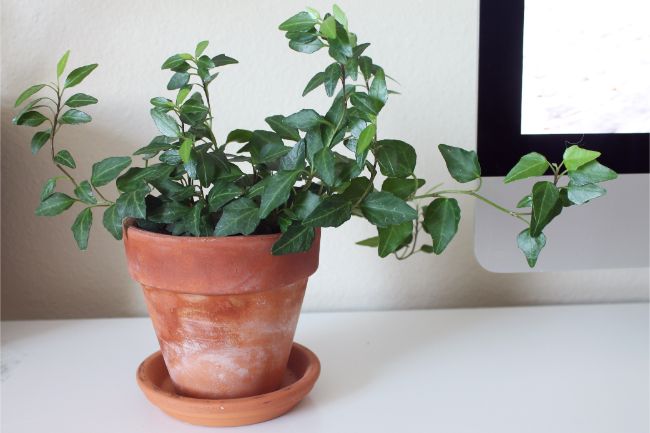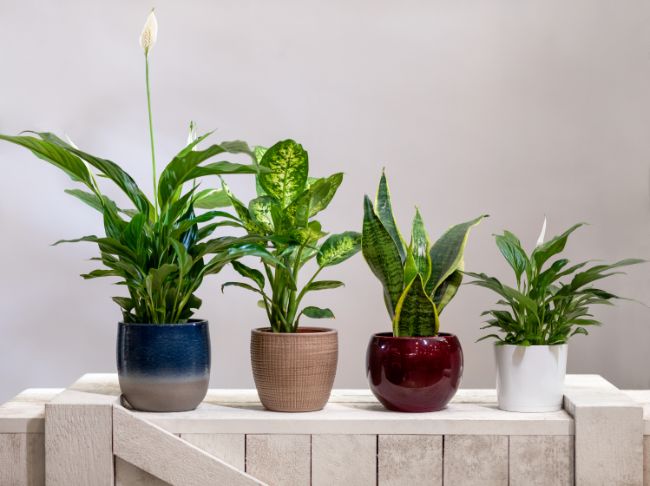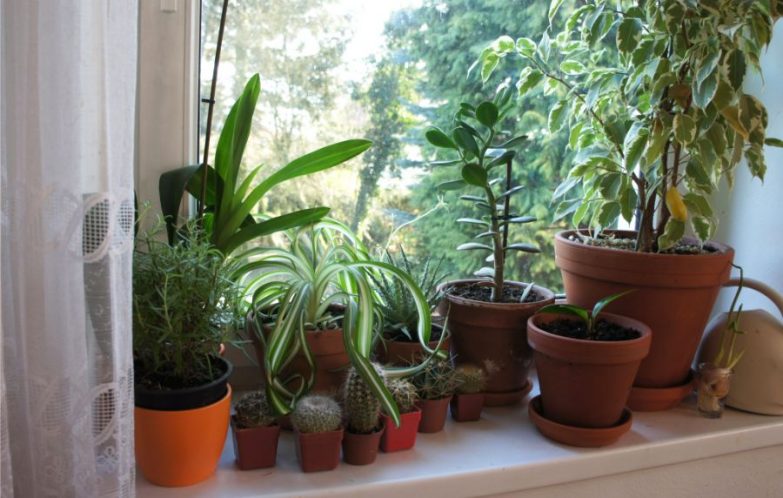For some plants it doesn’t matter much what type of pot you put them in; they’re content to go on about their business with no worries about the kind of “home” they’re in. For some though, it’s best to put them in a container that is better suited to their needs. This article will explain the pros and cons of plastic vs clay pots for plants to help you know which to use and when.
Which is better, plastic vs clay pots for plants? Plastic and clay pots have different attributes, impacting soil conditions for your plants. Generally, plants that prefer moist soil are better suited to plastic pots; plants that prefer drier soil are better suited to clay pots.
To explain a little better, let’s talk about these types of pots, their general attributes, why they work better for some plants than others, and their overall pros and cons.
Plastic Vs Clay Pots – Why It Matters
Before we go further, it’s important to mention one thing;
Understanding the impact of your choice of pot is more important than the material itself. You can grow any plant you like in a plastic pot, and it is just the same with a clay pot.
As long as you understand what impact pot material will have, you can adjust for this. Sure, you will find it easier choosing pots that are suited to the care needs of your plants, but there are no hard and fast rules.
Plastic Pots
When you walk into any nursery or gardening center you’ll notice there is a large selection of plastic containers. Probably more so than any other type of material.
Plastic or fiberglass pots are the most common containers for both indoor gardening and outdoor container gardening. Due to the manufacturing process, they can be made inexpensively and come in a variety of colors, sizes, and shapes. Which is a large part of their appeal – it’s easy to find a plastic container that fits your style and taste.
When purchasing plastic or fiberglass pots look for ones that feel sturdy and are slightly flexible. These will withstand time and the seasons better than ones that are thin and rigid.
So, what plants should you use plastic pots for? Plastic pots work best for plants that like their potting soil to stay on the moist side, instead of drying out quickly. Plastic isn’t a porous material so air movement doesn’t occur through the sides of the container. After watering your plant, the potting soil will stay moist for a longer time, keeping more water in the root zone.
Plastic pots also work well for indoor gardeners who tend to water infrequently or struggle to remember to water their plants.

Pros Of Plastic Pots
- Keep potting soil more moist because of non-porous walls that minimize air movement in and out of the root zone. Beneficial for plants that need more water.
- Limitless variety of colors and sizes to match your decorating style. You can choose from a rainbow of colors and circular, square, or even rectangular shapes.
- Plastic is strong and flexible, making it so they don’t need to be replaced as often because of their durability.
- They are very lightweight. This is a major benefit if you move your plants often, whether you are rearranging furniture regularly or your move your plants to different locations in your home based upon the season and the amount of light coming in through different windows.
- Inexpensive. Injection molding is a well-used manufacturing process that can be done cheaply, keeping the cost of plastic containers much lower than other materials.
- Easy to add extra drainage holes. If you purchase a plastic pot that doesn’t have drainage holes in the bottom it’s easy to add them if you have access to a drill.
- Plastic is easy to sterilize if you have problems with fungal diseases or want to make sure your pot is cleaning before using it on a new/different plant.
- Many plastic containers are made from recycled materials, helping to reduce your environmental “footprint”.
Cons Of Plastic Pots
- Plastic can become brittle and crack over time, especially if pots are exposed to cold temperatures (more of a problem if they are outside, especially if you leave them outdoors to overwinter). They can also become brittle if they have a significant amount of UV exposure.
- More easy to overwater your plants. With increased moisture retention, it is easier to create soggy soil conditions that can harm your plants. Learn about how to fix an overwatered plant here.
- More prone to tipping over. Lightweight containers can be beneficial if you are moving them often, but the lightness of plastic containers also means they are more prone to tip over, even when filled with potting soil. This can be problematic if your plants are in an area they might get knocked over by children or pets, or in windy conditions outside.
- When disposed of, they create plastic waste unless they are carefully recycled.
Clay Pots
There are really two different types of clay pots: those that are unglazed, i.e. terracotta, and unglazed clay pots. Both types have slightly different pros and cons so it’s best to talk about them separately.
Terracotta
For some people, terracotta pots are the quintessential, traditional option for your potted plants. They have been used for centuries to house both indoor and outdoor container plants. Natural clay is fired at a low temperature in kilns; the minerals in the clay partially melt, resulting in a hardened, yet porous material.
Iron compounds in the clay give terracotta pots their earthy color. Most pots come in the well-known muddy reddish color but are available in a hue of colors ranging from red, orange, yellow, brown, white, to light gray depending upon the clay content and where it is sourced from.
Then when is it best to use terracotta pots? Since terracotta is more porous than plastic, there’s good air movement through the sidewalls of the container, which dries the potting soil out quicker. This is great if you have a plant that prefers its roots to be slightly dry, letting the potting soil dry out more between waterings.

Pros Of Terracotta Pots
- Terracotta is a durable, natural material. Some people prefer this to plastic containers.
- They have a traditional aesthetic that blends in with many decors. As they age they take on a patina of sorts, adding to their charm.
- Their heaviness means they are more stable and steadfast, so they don’t tip over as easily as plastic containers. This can be a big advantage if you have pets or children that are prone to tipping plants over.
- When used outside the heavy clay walls helps to buffer temperature changes, which can stress and damage the roots of a plant.
Cons Of Terracotta Pots
- They break easily, much more easily than plastic. If you have terracotta pots outdoors the freeze/thaw cycle can cause them to crack and break when the temperatures drop too low. When they do break, the sharp edges are more dangerous than broken plastic.
- Terra cotta is much, much heavier than plastic pots. This may have its advantages at times but the increased weight can be problematic if you have large potted plants you are moving around often.
- Due to their porosity, they will accumulate unsightly salt buildup from fertilizers on the outside of them. As the water evaporates through the walls the salt moves through them as well, leaving behind a whitish, powdery film. It can be scrubbed off
- Slightly more expensive than plastic containers, although the cost is still less than ornate, customize planters.
- Harder to add extra drainage. If you purchase containers that do not have drainage holes in the bottom – although it’s rare to find ones without holes – they are much harder to drill holes into. Using a masonry bit helps tremendously, preventing the pot from cracking in the process.
Glazed Clay
Why choose between plastic vs clay pots, when you can have the best of both worlds. Glazed clay pots are somewhat of an intermediate between plastic and unglazed clay pots. Like terracotta pots, they are made by firing clay in kilns but are then painted or glazed in decorative colors and designs. This results in containers that have attributes of both plastic and terracotta pots.
When should you use glazed clay pots? Glazed clay pots combine many of the features of terracotta and plastic pots. Glazed clay looks fantastic and keeps the soil more moist than when using terracotta pots.

Pros Of Glazed Clay Pots
- Glazed clay is a good intermediate between the two types of pots. They don’t hold as much moisture as plastic yet don’t dry out as quickly as terracotta.
- Available in more designs and colors than terracotta planters due to the glazing technique.
- Heavy containers are good if you have top-heavy plants, or have your potted plants in an area where they could get knocked over.
Cons Of Glazed Clay Pots
- Heavy like terracotta pots, which makes moving them more of a task.
- They have a higher price tag than unglazed terracotta. The cost depends on the intricacy of the glazing and design.
- Can crack and break like terracotta, especially when subjected to freezing temperatures.

